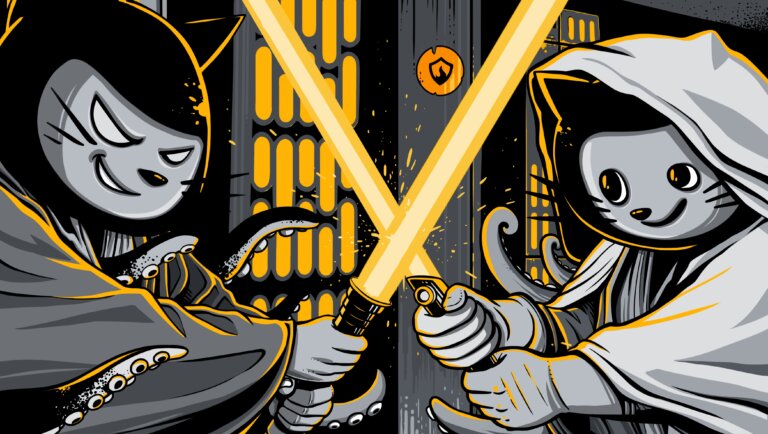Introduction
This post is a rather unusual story of a vulnerability that could be leveraged as a supply chain attack and used to attack millions of software developers around the world. It is also a tale of a bug collision that paid a bounty to one reporter and assigned the CVE to another!
The main focus of this blog post is GitHub Desktop. Other Git clients such as GitKraken, Git-Tower and SourceTree were also found to be vulnerable, however these have different exploitation scenarios that require user interaction.
Brief description of the issue
As part of GitHub Desktop’s default repository cloning process, among other actions, it calls the executable git-lfs.
From git-lfs’s official page “Git Large File Storage (LFS) replaces large files such as audio samples, videos, datasets, and graphics with text pointers inside Git, while storing the file contents on a remote server like GitHub.com or GitHub Enterprise.”
git-lfs is then called on the current cloned repository, already present in the disk.
A vulnerability was discovered when cloning a repository with a specially crafted file in the root directory. Upon cloning such malicious repository, code execution is achieved with the same privileges as the affected user running GitHub Desktop.
When inspecting the desktop application under Process Monitor, it was noticed several actions of git-lfs called a git executable from inside the newly cloned repository.
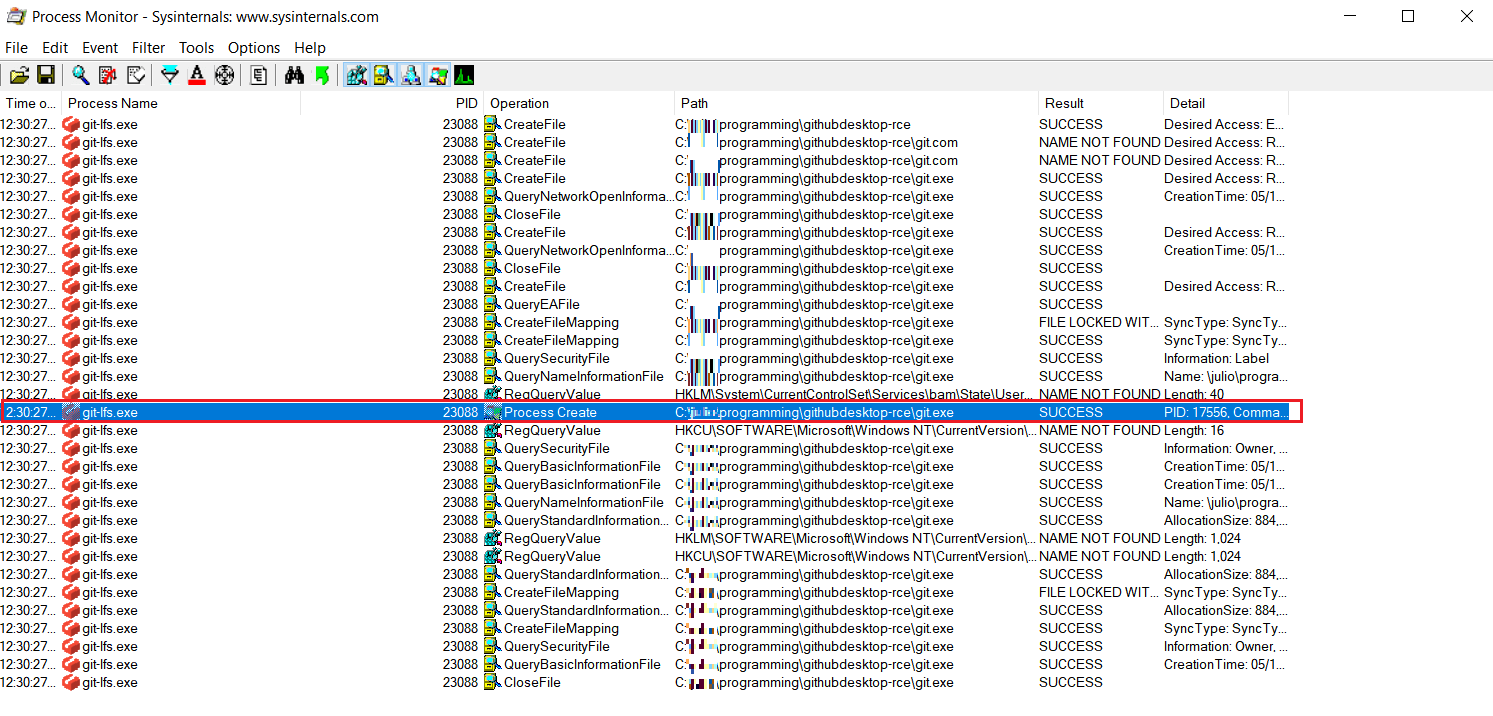
By placing a malicious git in the root of the malicious repo, a user that clones it will have the malicious git executed by git-lfs, all of this behind the scenes and transparent to the user.
The cloning process happens normally and there is no visual indication that a malicious binary was ran instead of the original git executable.
Root cause analysis
We attempted to understand the root cause of this vulnerability by reading git-lfs’s code. The authors of this write-up tried to put together as much information as possible in order to understand the cause of the problem.
From https://github.com/git-lfs/git-lfs/blob/master/commands/command_clone.go
From line 23:
func cloneCommand(cmd *cobra.Command, args []string) {
requireGitVersion()
if git.IsGitVersionAtLeast("2.15.0") {
msg := []string{
"WARNING: 'git lfs clone' is deprecated and will not be updated",
" with new flags from 'git clone'",
"",
"'git clone' has been updated in upstream Git to have comparable",
"speeds to 'git lfs clone'.",
}
fmt.Fprintln(os.Stderr, strings.Join(msg, "\n"))
}The function above seems to be called when a clone action takes place. Right in the beginning, the function calls requireGitVersion() and then checks whether the version is at least 2.15.0.
From https://github.com/git-lfs/git-lfs/blob/master/commands/commands.go
Line 537:
func requireGitVersion() {
minimumGit := "1.8.2"
if !git.IsGitVersionAtLeast(minimumGit) {
gitver, err := git.Version()
if err != nil {
Exit("Error getting git version: %s", err)
}
Exit("git version >= %s is required for Git LFS, your version: %s", minimumGit, gitver)
}
}It calls !git.IsGitVersionAtLeast(minimumGit) which can be found in https://github.com/git-lfs/git-lfs/blob/master/git/version.go
From line 28:
func IsGitVersionAtLeast(ver string) bool {
gitver, err := Version()
if err != nil {
tracerx.Printf("Error getting git version: %v", err)
return false
}
return IsVersionAtLeast(gitver, ver)
}Version() can be found in the same file version.go on line 18:
func Version() (string, error) {
gitVersionOnce.Do(func() {
gitVersion, gitVersionErr =
subprocess.SimpleExec("git", "version")
})
return gitVersion, gitVersionErr
}The function calling chain is the following:
cloneCommand() -> requireGitVersion() -> IsGitVersionAtLeast() -> Version()
We can see that in line 21 in version.go, there is inside the function Version() a call to subprocess.SimpleExec() – it executes the git binary with the argument “version”.
There is an implicit assumption from git-lfs that by executing an external binary, the operating system will first look it up from the system’s PATH environment variable. This is the true root cause of the vulnerability.
Calling the subprocess ‘git’ works as intended in GitHub Desktop for MacOS. In Windows, however, the search order favors the current directory first and only then it searches in the order specified in PATH.
Exploitation
By copying calc.exe, renaming it to git.exe and committing/pushing it into the root of the repository, the attacker sets up the crafted repository that will be used to later exploit users.
When a developer clones this repository using GitHub Desktop for Windows, its subcomponent git-lfs will work on the cloned folder as its current directory, meaning all subsequent calls to the binary ‘git’ will be instead calling the malicious git.exe not the one present in the PATH.
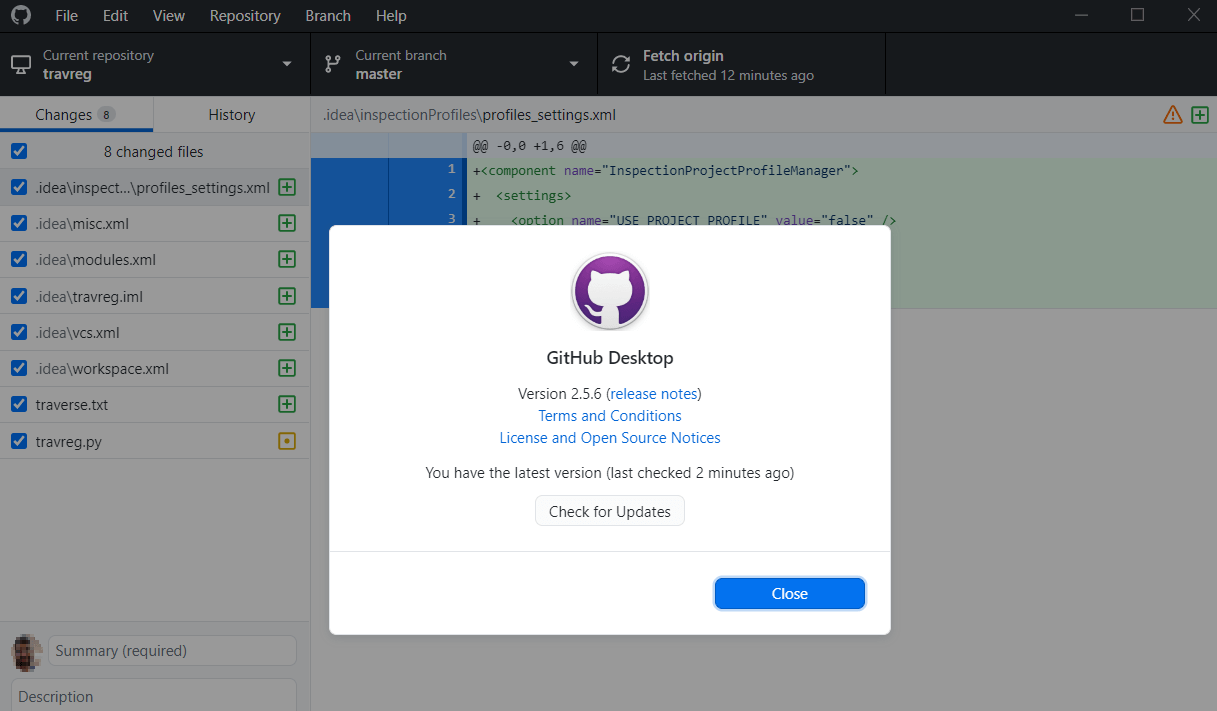
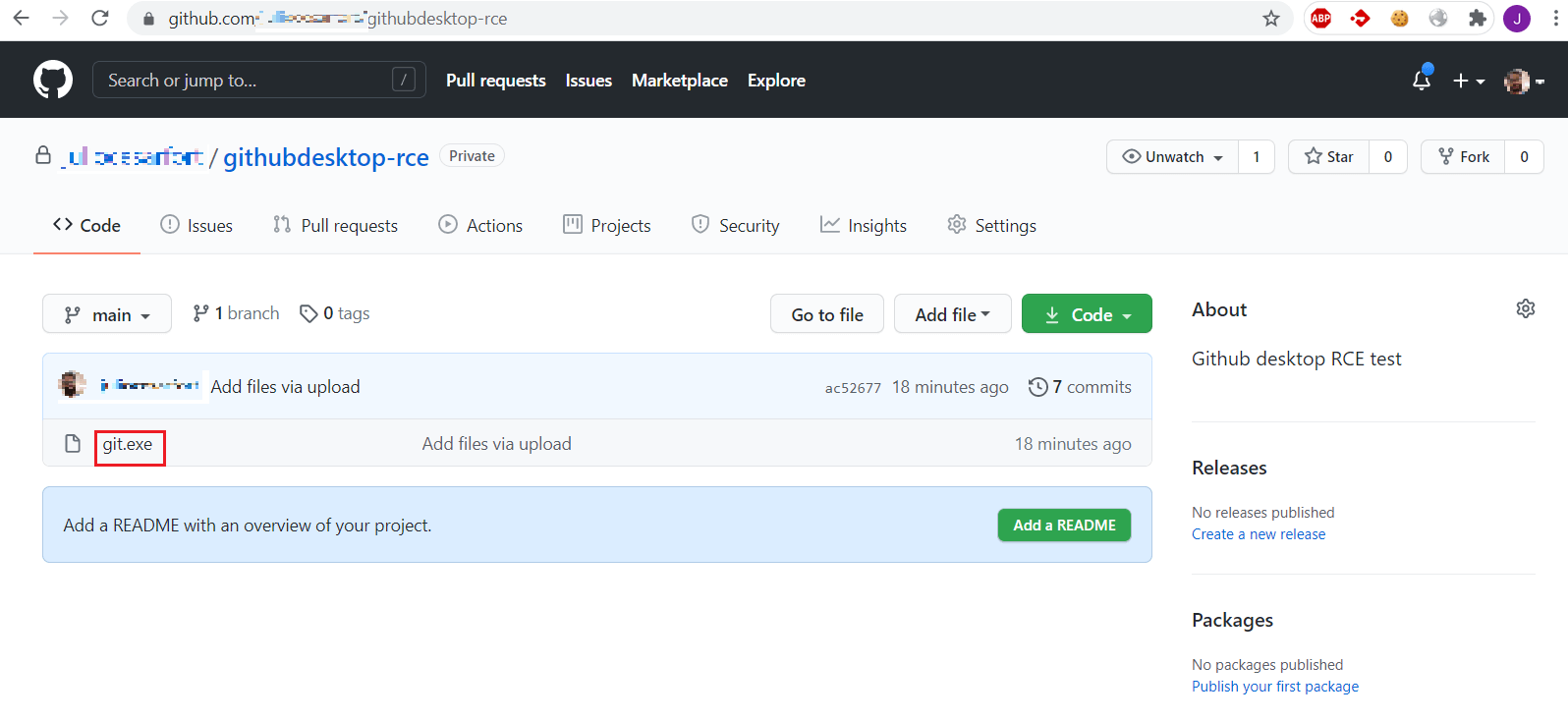
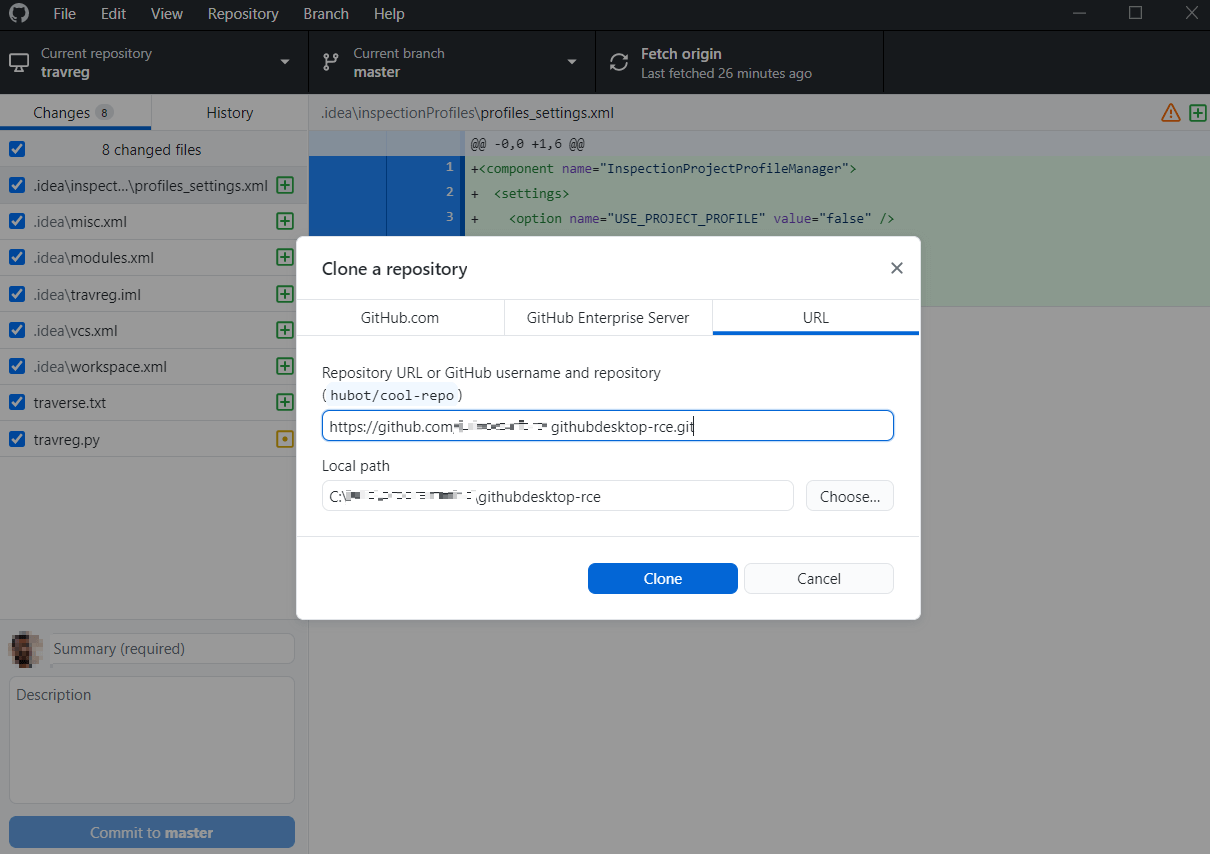
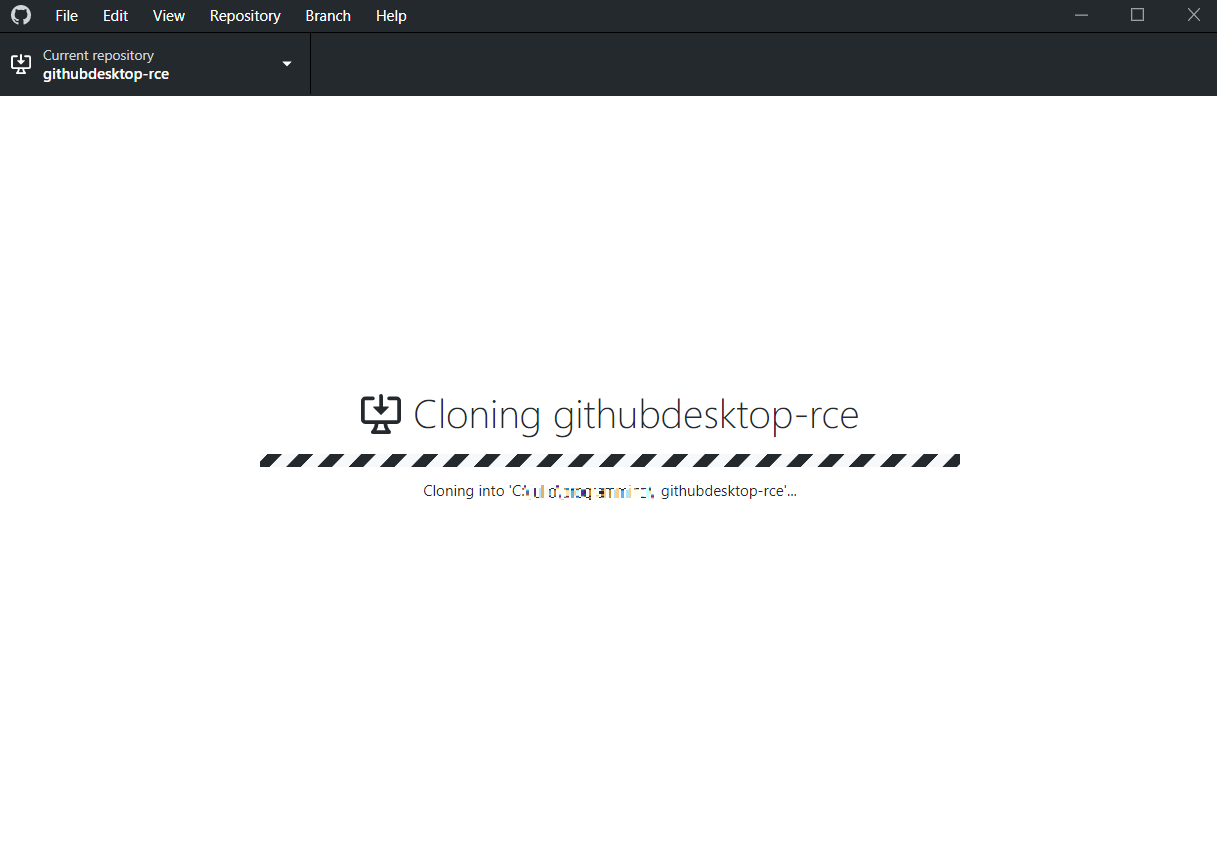
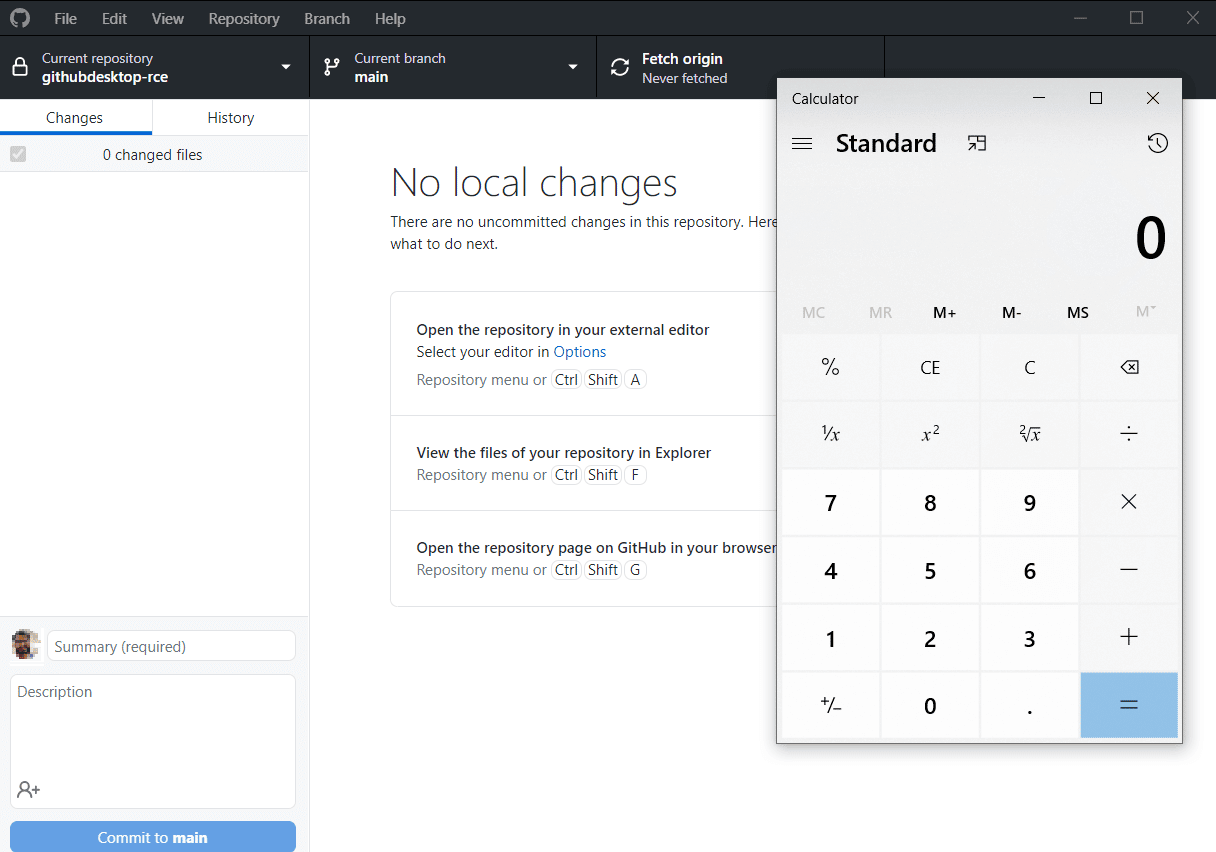
Below is a video of exploiting this issue on GitHub Desktop for Windows:
Other clients
During our research we noticed SourceTree
- SourceTree
- GitKraken
Credits
The vulnerability was simultaneously discovered and researched by Vitor Fernandes and Julio Fort of Blaze Information Security. The independent researcher Dawid Golunski (dobra robota, amigo!) apparently discovered the issue a few days earlier and submitted it to MITRE, while Vitor submitted it to GitHub’s bug bounty.
Vitor collected the bounty from GitHub’s program on HackerOne as his report arrived earlier and Dawid was assigned the CVE.
References
[1] https://docs.microsoft.com/en-us/windows-server/administration/windows-commands/path]
[2] https://docs.microsoft.com/en-us/previous-versions/windows/it-pro/windows-server-2012-r2-and-2012/cc753427(v=ws.11)
[3] https://github.com/git-lfs/git-lfs/security/advisories/GHSA-4g4p-42wc-9f3m (Collision with Dawid Golunski)
